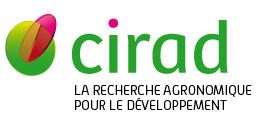Definition of sensory and instrumental thresholds of acceptability for selection of cassava genotypes with improved boiling properties
Iragaba P., Adinsi L., Delgado L.F., Nanyonjo A.R., Nuwamanya E., Wembabazi E., Kanaabi M., Honfozo L., Hotegni F., Djibril Moussa I., LondoÃąo L.F., Bugaud C., Dufour D., Kawuki R.S., AkissoÃĐ N.H., Tran T.. 2024. Journal of the Science of Food and Agriculture : 12 p..
DOI: 10.1002/jsfa.13363
BACKGROUND: Consumers of boiled cassava in Africa, Latin America and Asia use specific preference criteria to evaluate its cooking quality, in terms of texture, colour and taste. To improve adoption rates of improved cassava varieties intended for consumption after boiling, these preference criteria need to be determined, quantified and integrated as post-harvest quality traits in the target product profile of boiled cassava, so that breeding programs may screen candidate varieties based on both agronomic traits and consumer preference traits. RESULTS: Surveys of various end-user groups identified seven priority quality attributes of boiled cassava covering root preparation, visual aspect, taste and texture. Three populations of contrasted cassava genotypes, from good-cooking to bad-cooking, in three countries (Uganda, Benin, Colombia) were then characterized according to these quality attributes by sensory quantitative descriptive analysis (QDA) and by standard instrumental methods. Consumers' preferences of the texture attributes mealiness and hardness were also determined. By analysis of correlations, the consumers' preferences scores were translated into thresholds of acceptability in terms of QDA scores, then in terms of instrumental measurements (water absorption during boiling and texture analysis). The thresholds of acceptability were used to identify among the Colombian and Benin populations promising genotypes for boiled cassava quality. CONCLUSION: This work demonstrates the steps of determining priority quality attributes for boiled cassava and establishing their corresponding quantitative thresholds of acceptability. The information can then be included in boiled cassava target product profiles used by cassava breeders, for better selection and adoption rates of new varieties.
Mots-clÃĐs : manioc; propriÃĐtÃĐ organoleptique; comportement du consommateur; analyse organoleptique; acceptabilitÃĐ; prÃĐfÃĐrence alimentaire; critÃĻre de sÃĐlection; caractÃĻre agronomique; spectroscopie infrarouge; enquÊte auprÃĻs des consommateurs; instrument de mesure; bÃĐnin; colombie; ouganda; amÃĐrique latine
Documents associÃĐs
Article (a-revue à facteur d'impact)
Agents Cirad, auteurs de cette publication :
- Bugaud Christophe — Persyst / UMR QUALISUD
- Dufour Dominique — Persyst / UMR QUALISUD
- Tran Thierry — Persyst / UMR QUALISUD
